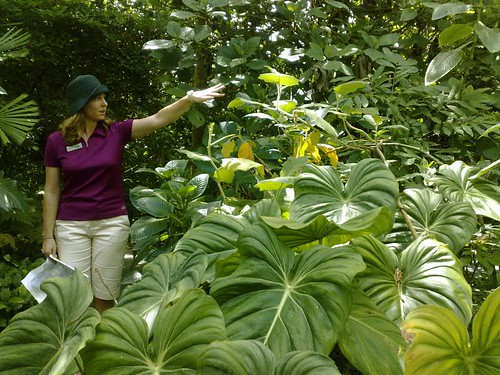 Teacher Theresa Chormanski points out a lulo fruit plant in the rain forest section of the garden. It's the plant directly behind the big leaves.
Teacher Theresa Chormanski points out a lulo fruit plant in the rain forest section of the garden. It's the plant directly behind the big leaves.This past Tuesday, I took a two-hour Economic Botany class at Fairchild. Economic Botany is basically the study of how people use plants. The class started with a lecture, followed by a tasting of various fruits. Afterwards, we walked outdoors to identify some specimens in the garden.
Our teacher was Theresa Chormanski, Education Outreach Coordinator at Fairchild. Another Outreach Coordinator, Nicole Gerard, talked to us about Fair Trade.
Theresa made some interesting observations about Miami's school children. "Many Miami students tell me I didn't even know you could eat plants," she said. "Miami school children can look at a plant but not ever imagine, for example, that a pineapple could come from it."
That's quite a shocker, isn't it? Makes you wonder what they're serving in Miami-Dade public school these days -- not just in the cafeteria but in the science curriculum.
Here are some of my notes from the class:

- Economic Botany is really very much a part of our lives; it's just that there's so much we sometimes take for granted. Theresa mentioned a quote from Martin Luther King: "Before you've finished your breakfast in the morning, you'll have relied on half the world."
- Some indigenous cultures have been using plants for centuries with no written record. The US Government and WR Grace once applied for a Neem tree patent with the European Patent Office but lost because it was considered biopiracy to commercialize this traditional medicinal tree from India.
- Medicine and botany have always been intimately related. 1/4 of all drugs are based on plants. I already knew about herbal remedies and supplements gingko biloba, St. John's wort and echinacea, but I didn't know that aspirin was originally crushed willow bark. Pharmaceutical companies get a bad rap, but it's important to isolate chemical compounds so that natural resources don't have to be depleted.
- Florida's own Saw Palmetto is a popular herbal remedy for urinary problems associated with prostate enlargement.
- Moringa hildebrandtii is an amazing resource from Madagascar. The tree is extinct in the wild but is cultivated widely. The dried leaves have 7 x more vitamin C than oranges, 3 x more potassium than bananas, 4 x more calcium than milk, 4 x more Vitamin A than carrots and 2 x more protein than milk. The seeds produce a high quality oil for consumption or burning. The seeds, when ground, also act as a water purifier. This tree could provide important nutrition to cultures whose diets rely heavily on starchy vegetables like yucca or cassava.
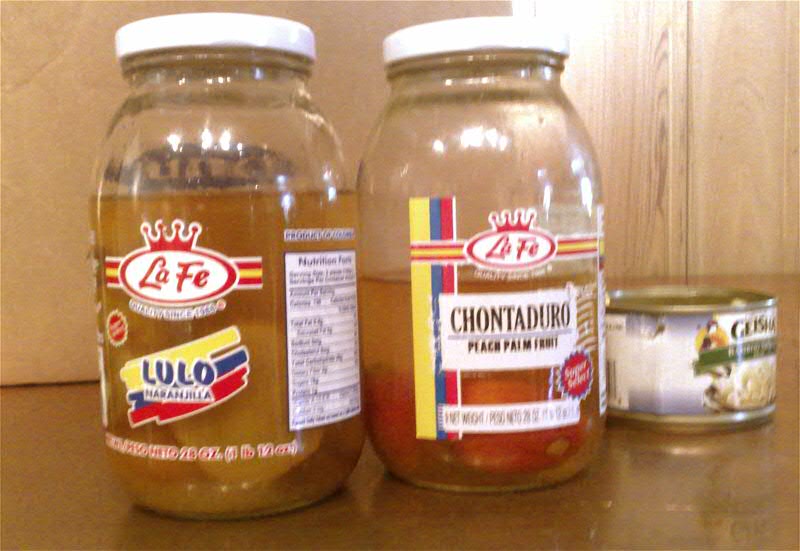 Lulo and Peach Palm fruit are available in the Latin foods section at Publix. The La Fé products were from Columbia. Both fruits are prepared in sweet syrup.
Lulo and Peach Palm fruit are available in the Latin foods section at Publix. The La Fé products were from Columbia. Both fruits are prepared in sweet syrup.There are dozens of specimens at Fairchild that have food, medicinal or cosmetic uses. Theresa gave us a chart that listed which plots in the garden feature each plant. We only saw a few of them but I would love to spot the cashew and the frankincense. Some plants I already know by heart. The vanilla orchid is right at one of the entrances of the rain forest, midway up a palm tree. My favorite plant -- the ylang ylang tree -- thrives in two places, one by the visitor's center and the other in the rain forest.
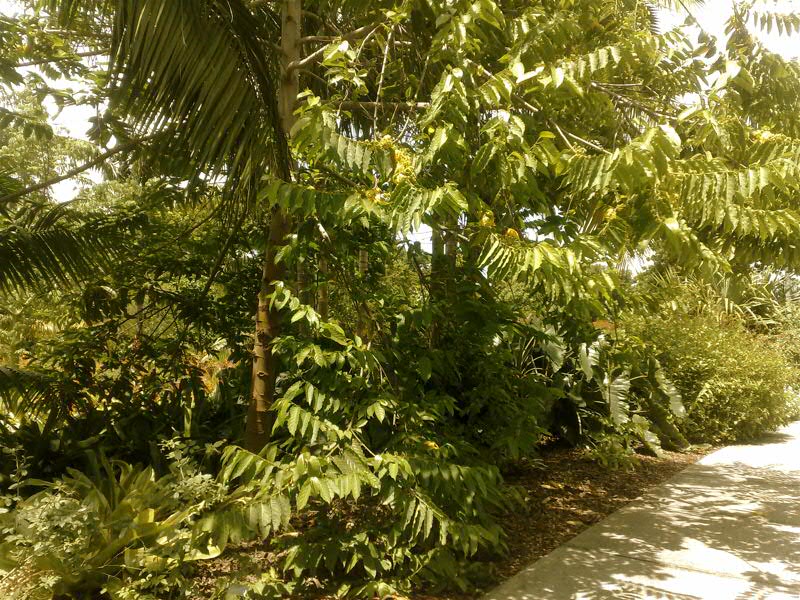 An ylang-ylang tree by the visitor's center. The oil from the flower is used as the base scent in Chanel No. 5. The scent is divine; it makes me swoon!
An ylang-ylang tree by the visitor's center. The oil from the flower is used as the base scent in Chanel No. 5. The scent is divine; it makes me swoon! A tomato hornworm chews the underside of a lulo plant leaf, which is very soft and downy to the touch.
A tomato hornworm chews the underside of a lulo plant leaf, which is very soft and downy to the touch.
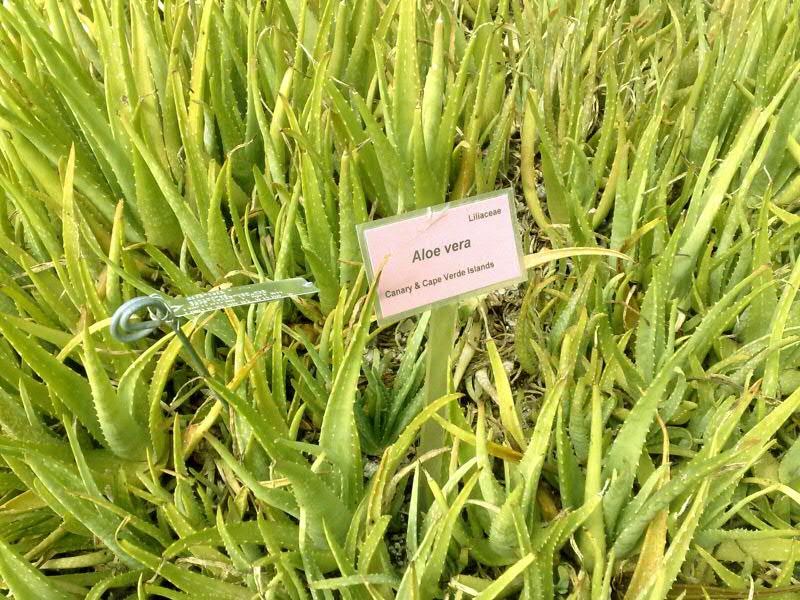
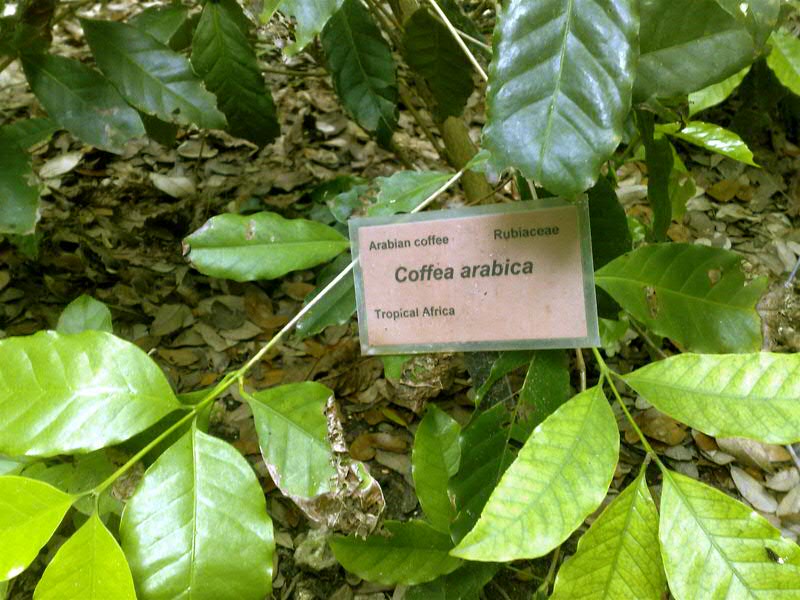
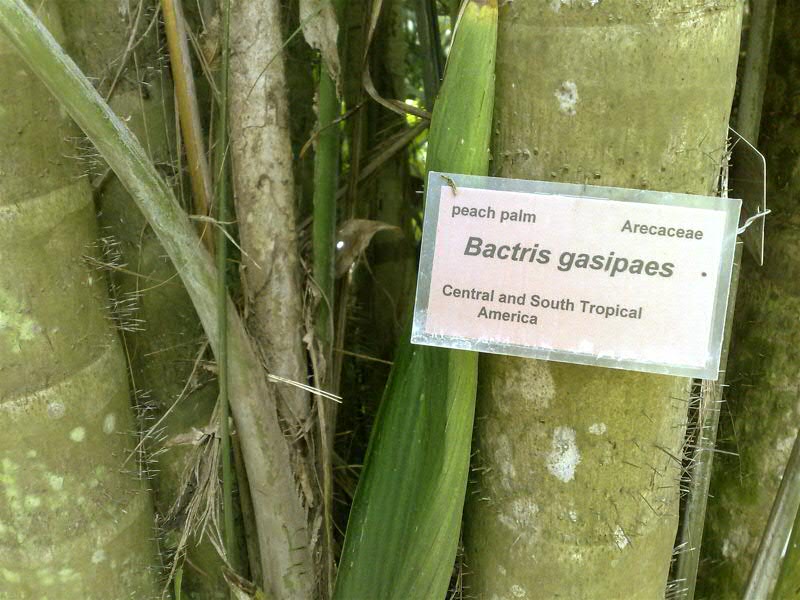




No comments:
Post a Comment